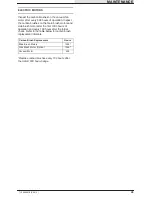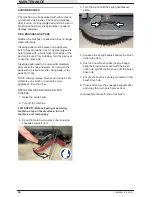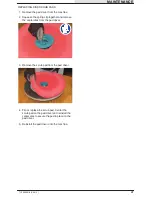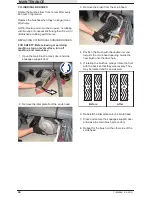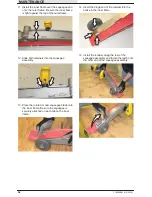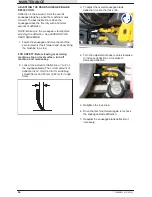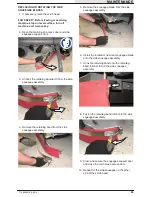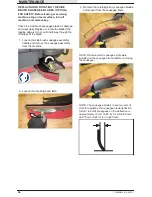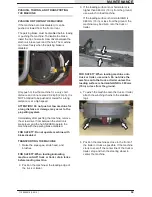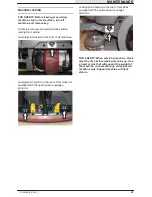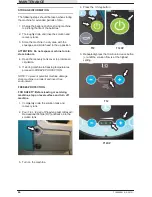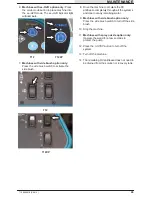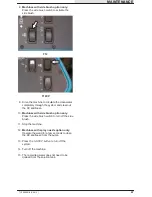
MAINTENANCE
59
T12 9009918 (3--2013)
PUSHING, TOWING, AND TRANSPORTING
THE MACHINE
PUSHING OR TOWING THE MACHINE
If the machine becomes disabled, it can be
pushed or towed from the front or rear.
The parking brake must be disabled before towing
or pushing the machine. To disable the brake,
insert the tip of a small screw driver between the
electronic brake lever and the hub. The machine
can move freely when the parking brake is
disabled.
Only push or tow the machine for a
very short
distance
and do not exceed 3.2 kp/h (2 mph). It is
NOT intended to be pushed or towed for a long
distance or at a high speed.
ATTENTION! Do not push or tow machine for
a long distance or damage may occur to the
propelling system.
Immediately after pushing the machine, remove
the screw driver from between the electronic
brake lever and the hub. NEVER operate the
machine with the parking brake disabled.
FOR SAFETY: Do not operate machine with
brake disabled.
TRANSPORTING THE MACHINE
1. Raise the squeegee, scrub head, and
brushes.
FOR SAFETY: When loading/unloading
machine onto/off truck or trailer, drain tanks
before loading machine.
2. Position the machine at the loading edge of
the truck or trailer.
3. If the loading surface is not horizontal or is
higher than 380 mm (15 in) from the ground,
use a winch to load machine.
If the loading surface is horizontal AND is
380 mm (15 in) or less from the ground, the
machine may be driven onto the truck or
trailer.
FOR SAFETY: When loading machine onto
truck or trailer, use winch. Do not drive the
machine onto the truck or trailer unless the
loading surface is horizontal AND is 380 mm
(15 in) or less from the ground.
4. To winch the machine onto the truck or trailer,
attach the winching chains to the stabilizer
legs.
5. Position the machine as close to the front of
the trailer or truck as possible. If the machine
starts to veer off the center line of the truck or
trailer, stop and turn the steering wheel to
center the machine.

